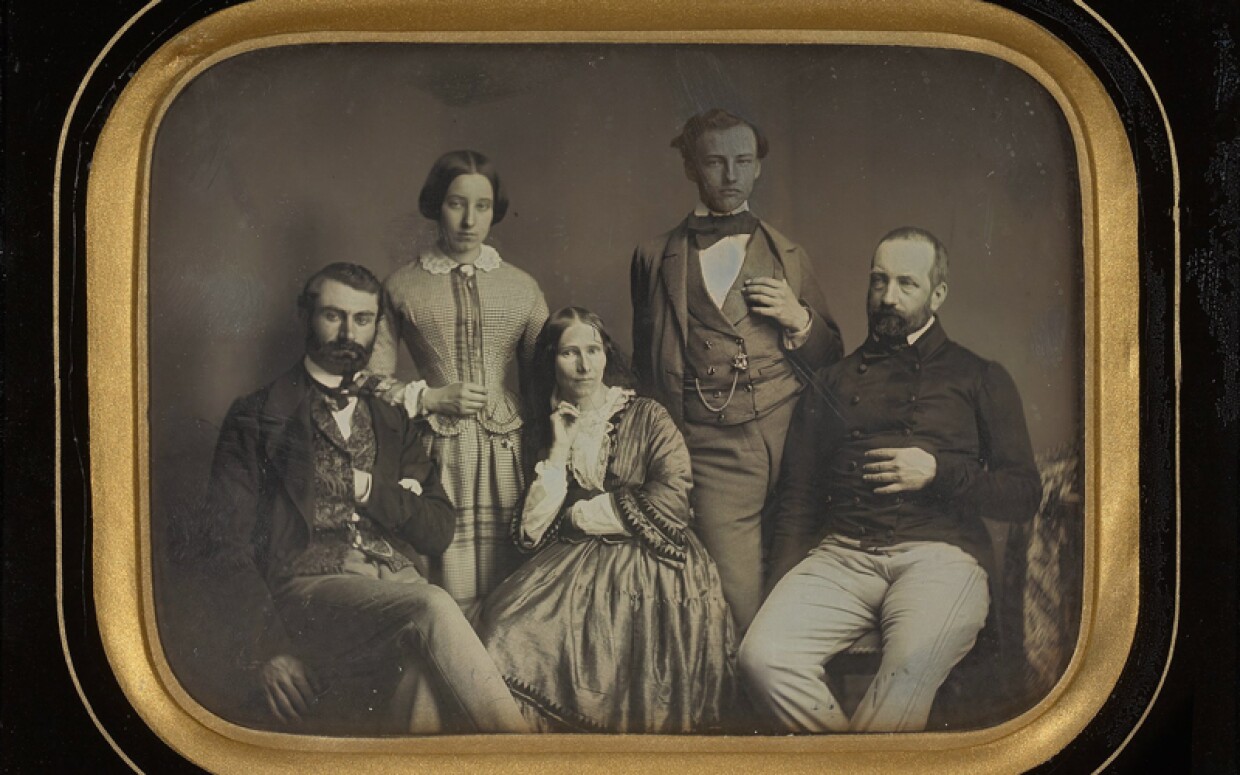In 1850s fashion, women wore dresses with large, voluminous skirts, and men wore suits with dark coats and light trousers. Women’s skirts became increasingly large throughout the decade, a trend supported by the introduction of the crinoline, a structured undergarment created with hoops. While men’s clothing remained relatively consistent throughout the decade, the lounge coat was introduced for suit coats, a look that would quickly grow in popularity. Young boys typically wore long, loose trousers with the long, flared tunic. Girls and young women wore pleated dresses with short sleeves and short hair.
Let’s take a closer look at what men, women, and children wore in the 1850s.
What Did the Women Wear in the 1850s?
Women in the 1850s wore dresses with large, voluminous skirts. The volume was originally achieved with layers of heavy petticoats, but by 1856, an alternative solution emerged: the crinoline. The crinoline was an undergarment consisting of steel hoops, sometimes referred to as a cage, creating space and volume for skirts laying over them.
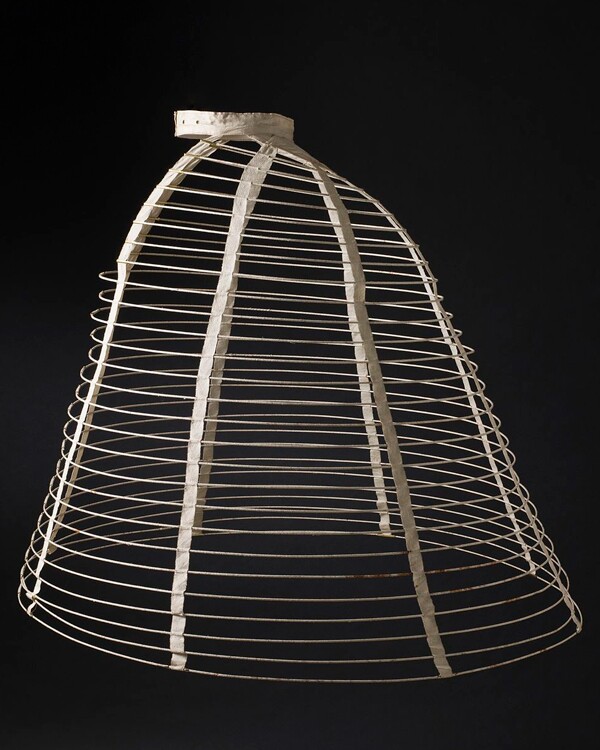
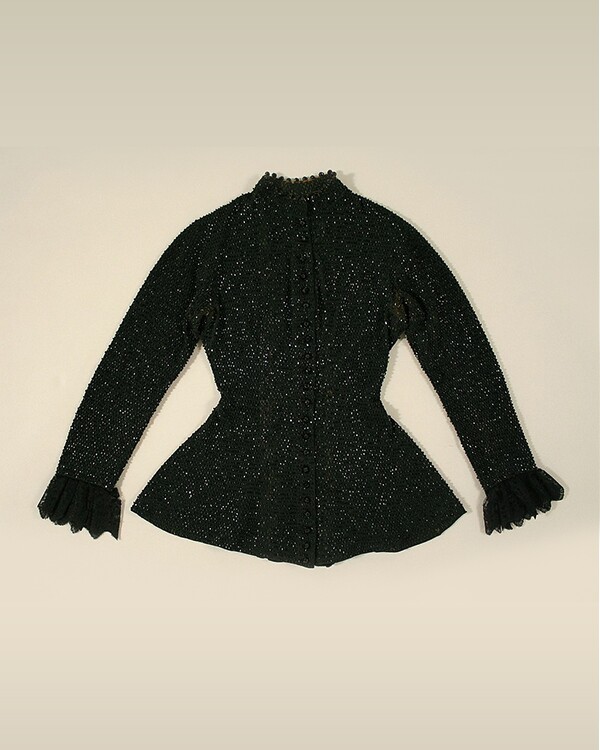
Before the crinoline was introduced, the layers of petticoats made it difficult to walk and were expensive to make. The crinoline drastically changed dresses for women. For one, they were much cheaper to make than the layered petticoats, making the fashion accessible to far more people. They were also much lighter and allowed more space around the legs, making it much easier to wear.
Another major shift revolved around the bodice, or top, of the dress. Dresses were previously made in one piece, but it was common in 1850s fashion for women to wear two-piece dresses with a separate bodice and skirt. A favorite style was the Basque waist, a bodice with an elongated waist that fit over the hips, often naturally fitting in as an additional layer over layered skirts.
The 2-piece dress also allowed women to switch out bodices for the same skirt, making skirts versatile for differing occasions. The high necks and long sleeves of everyday dresses could be traded for a more formal look with scooped necklines and short sleeves.
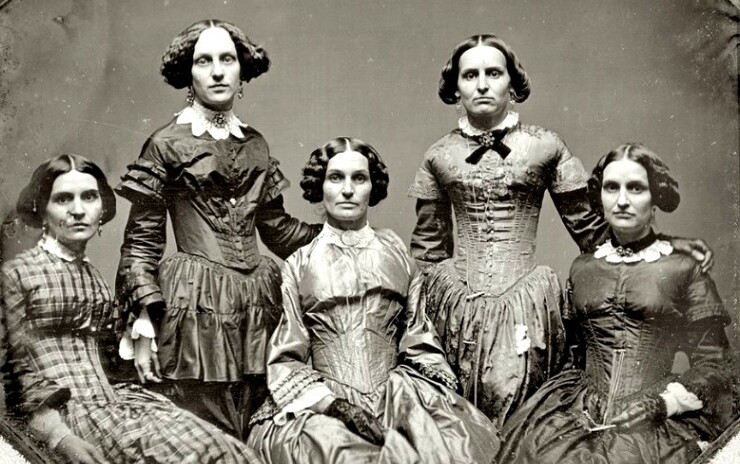
Women often accessorized with gracefully draped cashmere shawls and laced boots. They also wore their hair parted down the middle, draped over their ears, and tied in the back, accompanied by short-brimmed bonnets.
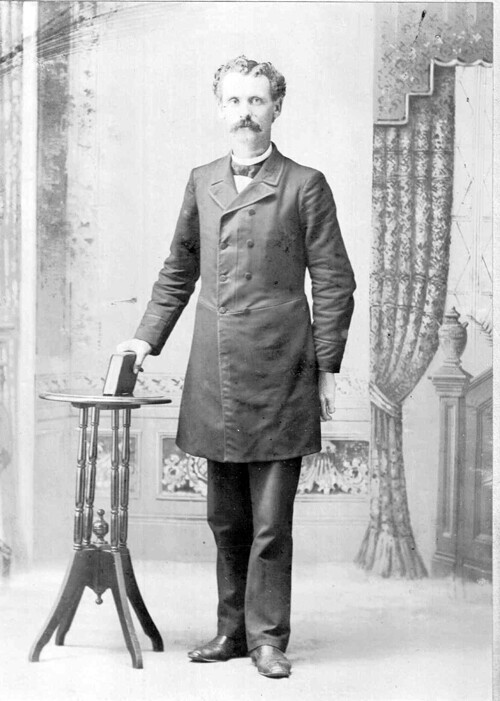
1850 Men’s Wear
Men in the 1850s generally wore suits. Everyday wear called for the frock coat, a coat that was fitted along the torso and flared at the waist, ending roughly around the knees. Suits were generally fitted, and trousers were fashionably worn in a straight cut.
The lounge suitcoat was introduced as a sporting coat, favored for its loose fit. The lounge suit was shorter than the frock coat and had a relatively straight cut, making it an ideal choice for sporting. By the 1860s, however, it would overcome the frock coat for daily wear.
Suit coats were typically dark in color, and pants were usually a lighter color. Some suits were even worn with plaid trousers. Vests had a bit more flexibility and could be worn in bright and decorative colors and patterns.
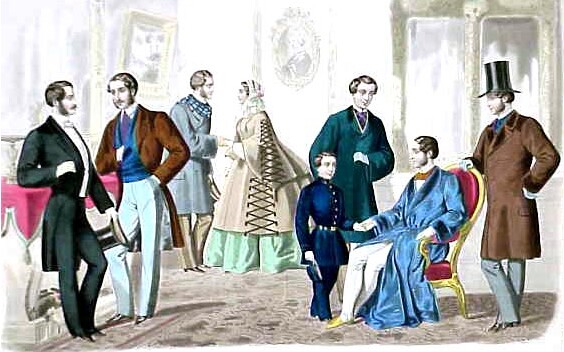
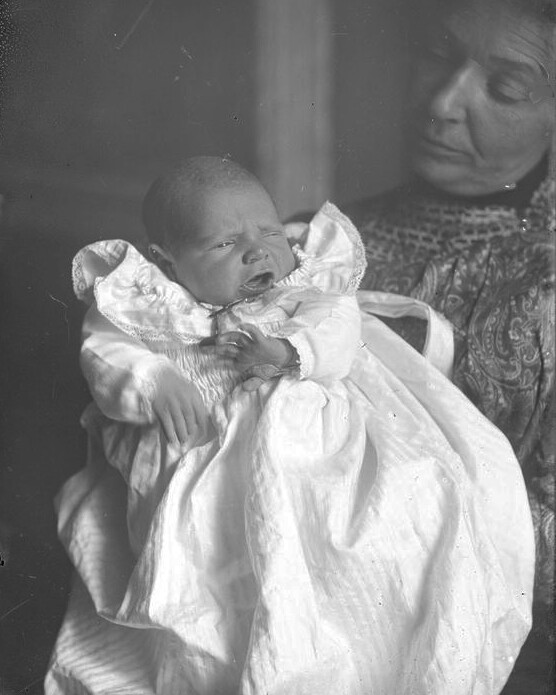
How Did Children Dress in 1850?
Infants, whether boys or girls, wore long white dresses—a trend consistent with the rest of the century. As babies learned to walk, their dresses were shortened to allow them to move more easily. Boys and girls alike continued to wear these short dresses through toddler years. As children approached age 4, they began wearing gender-specific clothing.
At this age, boys started wearing trousers. They wore long, loose trousers with long tunics that flared at the waist. Young boys also wore sailor suits with the famous squared collars. As boys grew into their teen years, they traded their tunics for suits similar to what their fathers wore.
Young girls continued to wear short dresses. Their dresses had longer waists than their mothers’, but the skirts were similarly full of volume. Rather than wear a caged crinoline or heavy petticoats, pleats were often used to achieve the flared look. Girls typically kept their hair short and parted down the middle.

As girls approached adolescence, they would begin to dress in the same styles as their mothers. Their dresses lengthened, and they grew out their hair.
What Did Your Ancestors Wear in the 1850s?
Have you ever wondered what your ancestors looked like or what they wore? Perhaps they wore the famous voluminous skirts or sported the classic top hat. Find out for yourself on FamilySearch Memories, a free tool that allows users to share stories and photos of their ancestors. Are your ancestors’ photos there?
Related Articles
What was happening in your family during these times of change? You may find some answers in the 1860 census.
